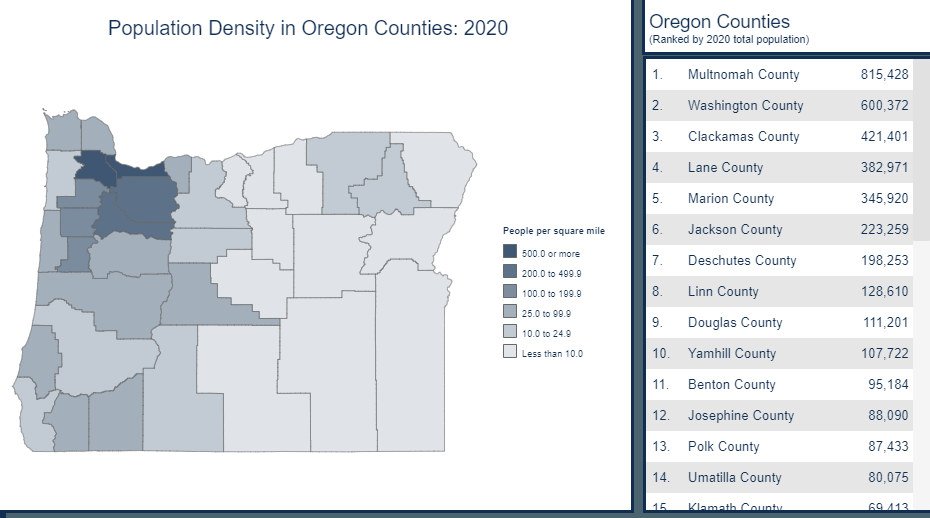Deschutes County’s population grew by nearly 26% in the 2010s — but that’s slower than the 2000s

(Update: Adding city population figures)
Nearing 200,000 residents; Census Bureau releases delayed population counts, kicking off redistricting
BEND, Ore. (KTVZ) – The U.S. Census Bureau released its first round of data from the April 1, 2020 census on Thursday, kicking off a delayed, compressed effort to redraw the boundaries of congressional and legislative districts across the country – but also shedding light on growth seen on the High Desert in the 2010s.
Deschutes County’s 2020 census population count was 198,253, the census data dashboard shows, an increase of 40,520 residents, for a sizzling growth rate of 25.7% for the decade. That equates to nearly 66 people per square mile, far less dense than many counties west of the Cascades.
The growth rate far outpaces the much more populated Portland area -- Multnomah County, for example, added more than 80,000 residents over the decade, for a total of 815,428. But that represents a growth rate of just under 11% for the decade -- but that county has nearly 1,900 residents per square mile.
However, Deschutes County actually saw fewer new residents arrive in the 2010s than in the 2000s. Between 2000 and 2010, the county’s census-counted population rose by 42,366 people, to 157,733 -- a dramatic 36.7% growth rate in the first decade of the new millennium (as always, population figures reflect not only people moving in or out, but births and deaths).
That slowing growth trend -- evident well before the COVID-19 pandemic's unpredictable impacts -- is being seen and felt nationwide.
“Many counties within metro areas saw growth, especially those in the South and West. However, as we’ve been seeing in our annual population estimates, our nation is growing slower than it used to,” said Marc Perry, a senior demographer at the Census Bureau. “This decline is evident at the local level, where around 52% of the counties in the United States saw their 2020 census populations decrease from their 2010 census populations.”
The new Deschutes County census count also is a bit higher than the July 1, 2020 population estimate of 197,015 residents compiled by the Portland State University Population Research Center and issued last fall.
Deschutes County’s population ranks seventh in the state, behind Jackson County’s 223,259 people but well ahead of No. 8 Linn County, which had 128,610 residents.
Crook County, meanwhile, added 3,760 people over the past 10 years, for an April 1, 2020 count of 24,738 residents, up 17.9% for the decade, but still equating to only 8.3 people per square mile. Jefferson County added 2,782 residents, for a total population of 24,502, a 12.8% increase from the 2010 figure, or just 13.8 residents per square mile.
Oregon overall recorded an April 1, 2020 census population of about 4.23 million residents, an increase of more than 406,000 people in the decade. That’s a growth rate of 10.6% during the 2010s (ahead of the nation’s growth rate of 7.4%). The number of Oregon housing units, at just over 1.8 million, is an increase of 8.2% -- a gap from population growth that points to housing challenges, even before the impacts of the pandemic.
As for cities (which you can look up along with the other figures in the Census Bureau's QuickFacts page), Bend had 99,178 residents last April, the census found, up from 76,639 a decade earlier, while Redmond grew from 26,215 in 2010 to 33,274 last year. Prineville grew to 10,734 residents (from 9,253) and Madras grew to 7,051 residents, from 6,046 a decade earlier.
